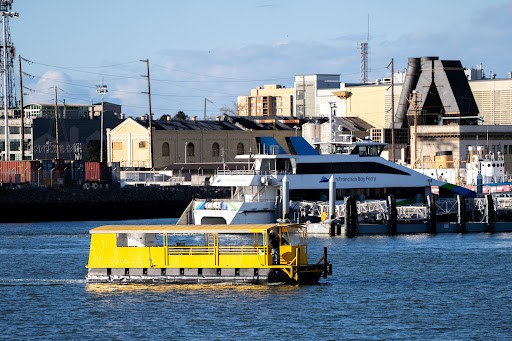This month San Jose got a little further from its long-time claim of being the 10th largest city in the United States. It now sits at 13th, falling another rung down the ladder since falling out of 10th place the year before.
San Jose’s population continued to decline in 2023, according to the latest update from the U.S. Census Bureau. The decrease was the smallest of any year since 2017, a sign of a possible reversal after six years of population losses, a trend that began before the pandemic.
The U.S. Census Bureau estimates San Jose’s population was 969,655 on July 1, 2023, down just over 1,500 residents from the year before. Meanwhile, Forth Worth’s population grew by over 20,000 residents in the same period, ending with nearly 9,000 more residents than San Jose, taking its place as the 12th most populous city, pushing the capital of Silicon Valley down another spot into 13th place.
In a press release announcing the latest city population estimates, Crystal Delbé, a statistician in the Census Bureau’s Population Division highlighted that the biggest growth is happening in the South.
“Thirteen of the 15 fastest-growing cities were in the South, with eight in Texas alone,” Delbé said. Only one California city made the list of the fastest growing places with over 20,000 residents: Lathrop, in the Central Valley about 10 miles from Stockton. Lathrop’s population grew by over 13% to almost 40,000 residents.
In 2004 San Jose reached the top 10, knocking Detroit off the list. About a decade later the city reached the million-resident landmark.
The city held on to that number ten spot for nearly two decades, but in 2017 things started to change.
After years of decline, San Jose dropped out of 10th place when population estimates for July 1, 2022, from the U.S. Census Bureau were released last year. Data for 2021 showed the city slipping below the million-resident marker.
The South Bay city was surpassed in 2022 by Jacksonville, Florida, and Austin, Texas. Those two cities have seen notable population increases in the past few years.
Russell Hancock, CEO of Joint Venture Silicon Valley, remembers the celebrations when San Jose first appeared in the top 10 largest cities in 2005. But he doesn’t fret too much about the recent declines.
San Jose remains the largest city in Northern California, larger than San Francisco and Sacramento.
While San Jose might start seeing population growth again soon, it would be hard to recreate the city’s population explosion that started in the late 1950s, and ended in the 2010s. Early growth was largely due to “smoke and mirrors,” according to Hancock, by annexing whole cities. “It gobbled them up. … It didn’t do it through natural population growth.”
Now San Jose has to rely on immigration to maintain its population and its position as a hub for technology and innovation. “That’s been the Silicon Valley secret sauce for generations,” Hancock said.
Immigration is more important now, partly because local residents are not having enough babies to replace the aging population. “The birth rate in Silicon Valley has been declining for about 10 or 15 years,” Hancock said. “That’s a significant social trend … really, hugely significant.”
When international immigration was disrupted by Trump administration policies, and then the pandemic, Silicon Valley’s population dropped. But now international immigration is returning, and Hancock is among those hopeful that the booming industry around AI technology will be a source of growth in the coming years.
“It wouldn’t surprise me if Silicon Valley’s economy decides to surge again,” Hancock said. “I really do see us on the cusp of that.”
The Bay Area’s two other large cities have already turned the corner. Oakland and San Francisco both showed population increases for 2024, though San Francisco has yet to recover from the dramatic drop in residents it had during the pandemic.
One possible factor the South Bay hasn’t seen a return of growth: stubbornly high rent in San Jose.
Related Articles
Oakland’s homeless population rises 9%, Alameda County population dips 3%
Census Bureau soon will ask about sexual and gender identity
California’s great exodus finally slows as population increases after 3-year decline
Census change will lead to more data on health of Middle Eastern, North African people in US
Nearly half of residents struggle to pay bills in one California city
Abby Raisz, a senior research manager at the Bay Area Council, a nonprofit group that promotes business and economic development, has looked at changes in median rental costs. In the year ending July 1, 2023 rent dropped 7.4% in Oakland, and 3.7% in San Francisco. San Jose saw just a 1.6% drop in the same time. This pushes people to move out of cities like San Jose into nearby areas with cheaper rent.
“The people moving out of these big cities tend to be lower income folks, much more so than wealthy folks,” Raisz has found in her research, and they are renters more so than homeowners.
San Francisco and Austin both had about 806,000 residents in 2010, but since then Austin has boomed, growing by over 173,000 residents in that time, while San Francisco grew by 76,000 through 2019, and then dropped over 72,000 residents, ending up just above 2010 population levels.
“More people doesn’t necessarily mean better quality of life. … In fact, there are a lot of people who would make the opposite argument,” Hancock said. Losing representation in the state Legislature and Congress is the main negative consequence Hancock could identify. “You get less representation in the halls of government, and that’s significant.”








